Peru: What Travelers Can Expect During COVID-19
In this episode, what you need to know about traveling to Peru during COVID, including the new rules for visiting Machu Picchu.
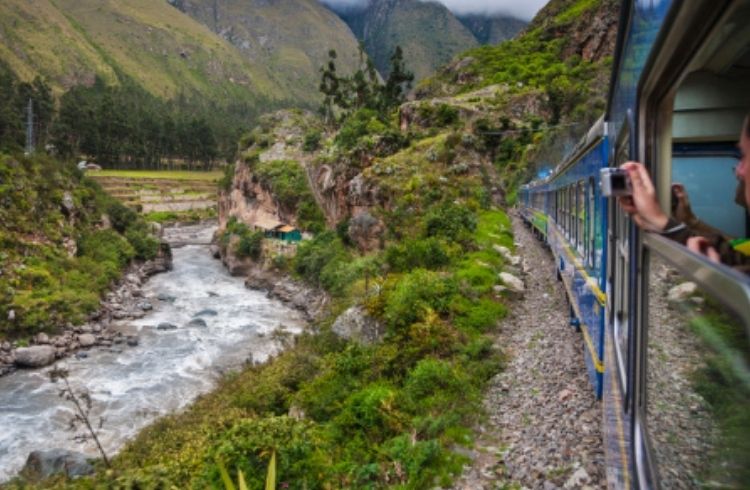 Photo © Getty Images/Gonzalo Azumendi
Photo © Getty Images/Gonzalo Azumendi
The World Nomads Podcast: Traveling during COVID-19
With COVID-19 still affecting the way we engage with the world, it’s important to plan wisely and travel responsibly, both for your own safety and that of the places you visit. But as we reengage with the world, you're likely planning vacations not far from home. World Nomads can help by providing travel safety tips, inspiring content, and travel insurance designed to protect you while traveling.
Before you buy a travel insurance policy, check your government travel warnings and health advice – there may be no travel insurance cover for locations with a government travel ban or health advice against travel.
What's in the episode
00:19 Where is Kim
03:58 Traveling to Peru during COVID
05:51 Having your gap year in Peru
10:07 Japanese festivals
12:25 Surfing secrets
16:20 Is Hawaii really the home of surfing?
19:30 Hiking the Inca Trail
26:00 Next week
Quotes from the episode
“…it's a beautiful place. I checked some fairly normal boxes, going down to Cusco. Did the Inca trail and stuff but they're popular for a reason?” Matt
“We've been coming to and from Peru, we're from Canada, for about I don't know seven/eight years now. And surfing lots of different waves up and down the coast. And we really fell in love with Huanchaco. Partially because of this long old surfing tradition which is still very much alive. But because the wave is accessible to all levels of surfers.” – Amy
“Vilcabamba is getting quite popular. On the way, you can see a mountain called Veronica 5,700 meters in front of you, snow-capped. You arrive at 4,300 meters, the highest point all the way down to the cloud forest to enjoy coffee, tea, chocolates, banana, mango, orange, mandarins.” - Efrain
Who's on the show
Actor Matt Lacey is also is known as Orlando from the YouTube comedy sketch Gap Yah.
Amy Schwartz from Unleash Surf - pack your laptop and work while you surf.
Efrain Valles Morales is a guide who knows all the top spots to trek in Peru and those you may not have heard about.
Resources & links
- Get the World Nomads Insider's Guide to Peru by clicking this, or by filling in the form on the right-hand side of this page.
- Orlando’s Gap Yah on YouTube
- Facebook live footage of Japan’s Hadaka Matsuri Festival also known as the Naked Man Festival.
- Want to more about festivals in Japan, read our World Nomads articles or watch our video series.
- Latest travel alerts and warnings.
- Which countries have open borders?
Help us spread the word
We’d love it if you could please share #TheWorldNomadsTravelPodcast with your Twitter followers and head over to Facebook and join the World Nomads Travel Podcast group.
If you liked this episode please head to Apple Podcasts and kindly leave us a rating, review, and of course, subscribe so you don’t miss an episode.
We use the Rodecaster Pro to record our episodes and interviews when in the studio, made possible with the kind support of Rode.
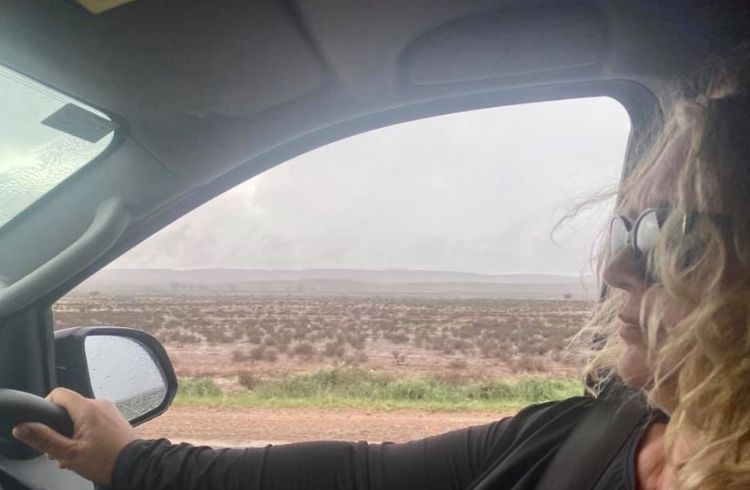
Phil: Hey it’s Phil and Kim and before we get into chatting about Peru, Kim is still on the road – where this time?
Kim: I have left the outback for now and traded it for a seaside getaway on the Yorke Peninsula in South Australia. Known for its fishing, boating, surfing, swimming, camping, and bushwalking. We are in our van right by the beach, so doing some snorkeling and visiting the odd microbrewery. Essentially, I am 13 thousand 810 kilometers or over 8 and a half thousand miles from Cusco in Peru – a long way to swim! And that’s the only way I’d be able to get in because Australia has still banned non-essential international travel
Phil: Yep, so depending on where you are from and what kind of travel is allowed international flights into Peru are running and all major sites around the Cusco area are currently open for free, hoping to spark national tourism. At the time of recording in October 2020, Machu Picchu is only open to locals but will home to international travelers next month. Once open, only 675 visitors will be permitted to enter the site per day, in groups of no more than 8 (including the guide). All the standard rules and regulations for COVID are in place and a negative molecular test, taken within 72 hours of arrival is still required to enter the country.
Kim: So, we have recut our episode on Peru updating you with what you need to know traveling there (thanks Phil) but also to whet your appetite for travel to this incredible destination. Our first guest is Matt Lacey. Matt is a British actor and comedian and he's best known for his role as Ben in the BBC TV series Cuckoo. And Orlando in Gap Yar, it's a comedy sketch and it went viral around the world. In fact, his pronunciation of Peru became a global catchphrase. Let's just have a little listen in case you haven't heard it before
Matt Lacey: That really reminds me of this time in my gap year. I was in South America in Peru, Peru. No Peru darling Peru. Peru, okay oh yeah Peru Peru yeah, wonderful country. You know beautiful people. Yeah. Yeah no we were trekking in the Andes and the sun was just rising and glinting off the snow creating this sort of ethereal haze. And I really got a sense of the awesome power of nature and the insignificance of man. You know then I just chundered everywhere. I was like all over the snow. I was like have that nature, one-nil.
Kim: I do love that, Peru darling Peru. Matt thanks for being part of the show. That youtube clip by the way has had six million views.
Matt Lacey: Wow is it six million?
Phil: No pressure.
Matt Lacey: It's funny hearing it back. I haven't heard it for a while. No, I didn't, and to be honest, I think if I had known I would have put it on my own YouTube channel and not the guys who filmed it.
Kim: What was the motivation behind it?
Matt Lacey: Oh it's all written from life. I met a lot of people at university that sort of spent the year vomiting all over the developing world. Was very keen to tell everyone about it. And I mean there's several that sort of sort of self-parody. I don't live in Fulham but I did actually go on a gap year. And I went to Peru, you can ask about that.
Kim: So look at Peru, Peru darling. What did you think of Peru?
Matt Lacey: Yeah it's a beautiful place. I checked some fairly normal boxes, going down to Cusco. Did the Inca trail and stuff but they're popular for a reason.
Kim: Did you chunder anywhere?
Matt Lacey: I don't think so. I managed to keep the deep-fried guinea pig down as far as I could remember.
Phil: I couldn't go there, I tried that there. I couldn't go there. You didn't do you?
Matt Lacey: Yeah I did. It's a cliché but it tasted like chicken. Sort of the brown meat of chicken.
Kim: Where else have you been around the world?
Matt Lacey: Lot's of different places. So after the gap year, I'd been broke. The Telegraph serialized my book. By the way that's still on sale. Look for that, the hardcore fans. And yeah after they serialized they sent me to South Africa to live on a lion preserve. I wrote a fantastic puff piece about it. So that was fun. Most recently I've been going to Europe a lot, just because it's quite easy. So most recently I've sort of ... My most interesting trips have been based around weird festivals. And in Europe, there is an absolute plethora.
So I recently went to one in the Bath Country where they string a goose cadaver on a wire and then loaded boats go past it. And the locals try to jump onto the goose cadaver as it gets flipped up and down into the air. If they fall off they lose, but if they manage to hold on and thus decapitate the goose, they win. Generally is you scratch the surface in Spain and the Basque Country, every small town will have some sort of weird festival that you can go to. You know some of them to replace their goose with a rubber goose. I think for animal rights reasons.
Phil: In the more ethically sound towns of the Basque country.
Matt Lacey: Yeah.
Phil: I reckon you should go to the one in Japan. We've got a film where we covered it at World Nomads. It's the naked man festival in Japan.
Kim: Yeah it's on there.
Phil: No men only.
Matt Lacey: They go off to that island and all get naked.
Phil: Yeah well there's-
Matt Lacey: I think I read about that.
Phil: Yeah there's this really strange ... And there are thousands of men just wearing loincloths basically inside this temple. And the priest lobs a stick into the crowd and then they all fight for it. And then the person who picks it up and puts it into a receptacle gets, I don't know good luck for a year. So it's like this thronging mass of you know a thousand fifteen hundred semi-naked blokes. It's amazing.
Matt Lacey: When I went to Japan, I particularly remember the Onsen, the hot baths which are amazing. That some of them really don't have the capacity for the naked men that want to kill each other. I was nearly sort of, to put it bluntly, had bits slung against by an elderly Japanese man. Tried to get into the plunge pool. So I guess that's probably good training for the naked man festival.
Kim: Thanks so much for having a chat. It's a real pleasure particularly as a fan of Orlando. Matt thank you very much.
Phil: Thanks, Matt.
Matt Lacey: No worries.
Kim: We'll have that clip in our show notes for you to see in full plus links to where you can buy Matt's book, The Gap Year Planner.
Phil when you mentioned we were doing a podcast on Peru, and then you said "Hey I wanna follow up with a chat on surfing." I was thinking "Is he mad? Peru and surfing." But they go hand in hand.
Phil: A massive coastline there as well. And nothing between Peru and Asia basically.
Kim: I know but I just didn't think. And hence we got in touch with Amy and she's going to educate me and perhaps everyone else that's listening that wasn't aware of this fantastic surf culture in Peru. Hi, how are you going?
Amy: Good how are you?
Kim: Well I'm well but I'm feeling a little, not underwhelmed but undereducated. Phil's right you know there's a massive coastline. Tell us about this surfing culture.
Amy: Sure. So it's one of these places that are not necessarily on every bodies kind of surfing travel journey map. But in terms of like South America or the kind of Western Hemisphere, it's probably like the Indonesia of Latin America or North and South America. Because it does have this long coastline and it's broken up by a fair number of point breaks. Which means that the swell comes in and kind of breaks gradually along with a point. Which for a surfer is generally kind of the ideal setup for a wave.
Not all surfers will say that but most of us I think would. So Peru is really sort of well designed. Most of Peru gets waves literally every day of the year. It is a very very rare day when it's flat. So it's pretty special in that sense.
Phil: And what sort of quality surf are we talking about? Are we talking about big waves that you get there or is it always smaller or varies?
Amy: Yeah great question. Again it depends. It's usually ... I don't want to make it seem like the land of the perfect wave but it's often kind of the perfect size. So I'm not sure what you use in Australia but in Canada we usually use feet. So it's usually between like three and six feet on most days. And where we are right now, which is Huanchaco which is just eight hours North of Lima. So it's sort of in North Peru but not super North. It's got, it generally has like a good size swell that's good for almost any level of surfer from kind of beginner to intermediate.
But then if it does get really big, there are other spots that you can go to that kind of hold a bigger swell. Huanchaco became a world surf reserve partially because of its history, which again has this kind of culture. Which is actually a fishing culture. So they build these big old boards out of what's called Totora reed. So it's just a reed that they cut in the swamp. And they use them kind of like a stand-up paddleboard.
But they've been using them for at least 3500 years. So that's part of this kind of original or this very old ancient history. But several civilizations have used, kind of make it very significant around the world as the origin of surfing. So that was part of the reason why it was considered significant enough to become a world surf reserve. And it's got a real sort of alive surf culture in the sense that you had this traditional surfing or fishing craft that is considered the first surfboard or the original surfboard that you see going in and out of kind of the surf break every day.
And then you have surfers surfing around this kind of very traditional ancient surfing craft. So it's a pretty special atmosphere. There's nowhere else I've even been that has this kind of living history along with kind of modern surfing.
Phil: Alright amazing but I've got about a dozen questions to ask you then. I'm just gonna backtrack a long way, 3500-year-old surfboard. The history from that and what does a Peruvian surfboard, that's the reed thing that you're talking about. Is that right?
Amy: Yup it's called Caballito de Totora. Which means basically like seahorse of the reed. So the reed is Totora.
Phil: Peruvians claiming surfing, is that what you're saying?
Amy: Yeah and it's interesting because there's a long ... I would say the modern history of surfing has really held onto this idea that you know modern surfing came from Hawaii. Which and don't quote me on this, but in the eighties when the first ISA World Champion Felipe Pomar, who now lives in Hawaii actually but he's Peruvian kind of brought evidence of this to Surfer Magazine and did a big article on it in Surfer Magazine. And stirred up the pot about where did surfing really originate? And if you have evidence of this civilization using this kind of a board 3500 years ago. Well, it definitely shows it's older than the Hawaiian tradition.
Amy: We've been coming to and from Peru, we're from Canada, for about I don't know seven/eight years now. And surfing lots of different waves up and down the coast. And we really fell in love with this place I mentioned already, Huanchaco. Partially because of this long old surfing tradition which is still very much alive. But because the wave is really accessible to all levels of surfers. So two years ago we were here and my partner was working remotely. He has a web design business.
And we were just kind of thinking about what's next in life and we were thinking about "We would love to take other people who can work remotely to a place like Huanchaco where you can have really great Wifi. You can surf literally every single day of the year. And if it gets too big here then you can take people to Chicama, which is the longest left in the world." It's about an hour from here so when it gets really big here it works really well there in Chicama. So you've got lots of options for waves in the region and we thought "Well-" ... And also the other thing about Huanchaco is you can walk to everything.
So we were like "This is the perfect place to kind of just hanging out for a month, get your work done, but also every day before you work to go out and surf." And then at lunchtime, you can go out and surf and in the evening you can go and surf. You can surf your face off all day but still get your work done. So we decided that we would start a business where we basically take people who can work remotely but wanna have kind of a more wholesome surf lifestyle and bring them here. We set them up with everything that they need.
So we get them a private apartment rather than kind of a hotel room. We want them to feel like they're really living here. So we get them a private apartment, surf lessons or surf coaching, Spanish lessons, yoga, and then we do either surf tours or other kinds of trips and tours on the weekends. And so we provide that for people either for two weeks or for a month. Or for two months or three months so that they can really basically live their dream surfing lifestyle.
Phil the Inca trail is being overrun and there have to be some worthwhile tricks in the area that are an alternative. This guy apparently knows them. Now I'm hoping that I pronounce your first name correctly, it's Efrain?
Efrain: Efrain Morales
Phil: I knew we'd get it right.
Kim: Us Australians are so bad at putting the, just that little twist to make everything sound sexy.
Efrain: Ephie, you can call me Ephie, will be easy. But my name is Efrain Bardies.
Kim: Okay so it's true the Inca Trail is getting overrun Ephie?
Efrain: Actually yes, there are 500 people a day starting almost altogether. There are some ways to [inaudible 00:20:56] in, but most of the people they like to do the Inca trail in four days. So all of them start together, they camp in one place altogether. They walk almost altogether. Of course, the landscape is amazing, the biology, nature in that area is amazing but after four days of hiking with many people, it's like you were not really in the place that you were thinking you would be.
We as a guide and myself as a guide, we are upset about it and we are trying to find some type of solution for this, or perhaps look at for options or alternatives.
Phil: Well this is what we wanted to talk to you about because I had heard about Choquequirao, which is very similar to Machu Picchu and not that far away, is that right?
Efrain: Choquequirao is very well known as the sacred sister of Machu Picchu. It was abandoned for quite a long time, the Government doesn't put attention much to that place. But recently the mayor from the different communities around, they are trying to talk and restore the area with the help of the Government. [inaudible 00:22:08] was also helping there. They are trying to build a cable car but it still is in a project. But the hike is amazing, the sight is an unbelievable place with a lot of [inaudible 00:22:19]. With amazing platforms, houses, temples, waterfalls. I really like more that place than Machu Picchu. Much is amazing, the land, the surrounding the mountains, of course, it's one of the new seven wonders.
But it's the only place where I have seen a Condor, like three meters right in front of me. Right at the point of Choquequirao, right at the platform. Where else in the world you're gonna see the Condor three meters right in front of you?
Phil: No absolutely.
Kim: Not sure if I want to see the Condor three meters in front of me. So Ephie tell us then about some of those other worthwhile treks in the area that ideally have some of those amazing ruins at the end like Machu Picchu?
Efrain: You can go to Choquequirao then you can connect to Vil Cabamba through Vitcos. Vil Cabamba was the last shelter, the last capital of the Inca empire. Fans were here in 1533.
Phil: Can I just ask you about Choquequirao again.
Kim: You just wanted to say it.
Phil: I just wanted to say the word because I think I've got it right. So because ... I mean you're going up and down a fair height a few times there. So how many people, you say you've got 7,000 today at Machu Picchu. How many people are you getting at Choquequirao?
Efrain: Okay I was there so many times and sometimes I was there along with my group.
Kim: Wow.
Efrain: Okay I found sometimes a couple of groups. Sometimes you can see fifty people. Sometimes sixty, but I don't think so more than that. I haven't seen never ever in that area more than sixty people in a day.
Phil: Can I ask you two more questions alright? Just two more. One of them is the Inca trail to Machu Picchu. Some people do a two/three-day trek. How fast can you do it? What's the fastest you've ever done it?
Efrain: Okay. You really wanna hear that?
Phil: Yes.
Efrain: Okay the first time, the four days Inca trail, you could now do in three days.
Phil: Four days.
Efrain: The rules are, you buy your tickets for four days or for five days. But the fastest I did, the first time was six hours with a runner from Scotland. The second time I did it was in three hours and forty fives minutes.
Kim: Oh come on.
Efrain: Sorry, sorry. Four hours and twenty minutes. But the record is three hours and forty-five minutes by professional runners.
Phil: My final question for you Ephie-
Efrain: No problem. Ask as much as you want.
Phil: Machu Picchu, Choquequirao have you got another one? Is there another one you're not telling us about?
Efrain: Vilcabamba. It's getting quite popular. On the way, you can see a mountain called Veronica 5,700 meters in front of you, snow-capped. You arrive to 4,300 meters, the highest point all the way down to the cloud forest to enjoy coffee, tea, chocolates, banana, mango, orange, mandarins. All the foods, pineapple, papayas, all the way down to the jungle where we produce Coca leaf as well. We produce all the fruits we have in Cusco come from that area. You see the landscapes also amazing. The rivers, you can do rocking, biking, lots of activities. Then you go to Vilcabamba, the last capital of the Inca Empire, the last shelter of the Inca Empire where the last Incan was killed. In a day you can see no one or somebody but not many groups, less than Choquequirao.
Then we have another called Lares. Lares is an amazing hike, people who still speak Quechua our native language, Inca language. Who still live over 4,000 meters producing potatoes, Limas and Alpacas up in the mountains. Worked in extreme temperatures wearing typical clothes living without any money in the area. But they still do the sharing, "Give me corn, I'll give you potatoes. You give me this I'll give you that." The landscape, the mountains. And they wear typical clothes made by them, textiles. Beautiful, beautiful, the trek is called Lares.
Kim: Thanks Efrain and if you would like him to be your guide trekking through Peru, we will show you where you can get hold of him in our show notes alongside travel alerts and detailed information on travel to Peru – do your OWN research.
Phil: Get in touch and share your story at podcast@worldnomads.com … also a reminder to rate share and subscribe from wherever you get your favorite pods.
Kim: Next episode the women who have been traveling for either business or pleasure during COVID and the launch of a new app for solo female travelers.
Related articles
Simple and flexible travel insurance
You can buy at home or while traveling, and claim online from anywhere in the world. With 150+ adventure activities covered and 24/7 emergency assistance.
Get a quote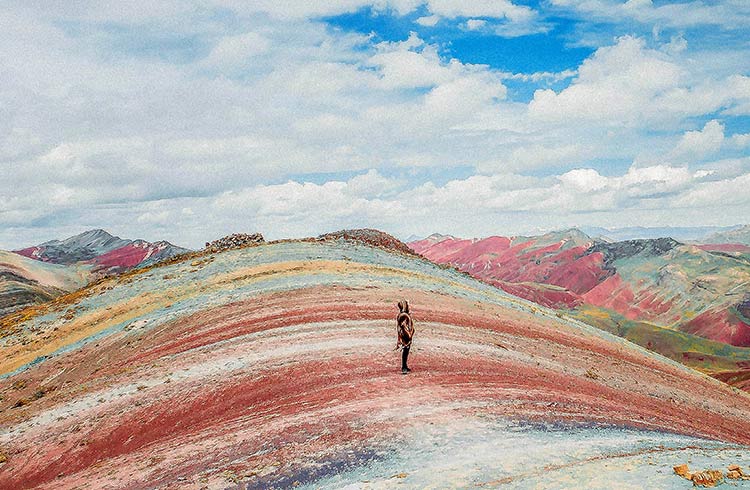
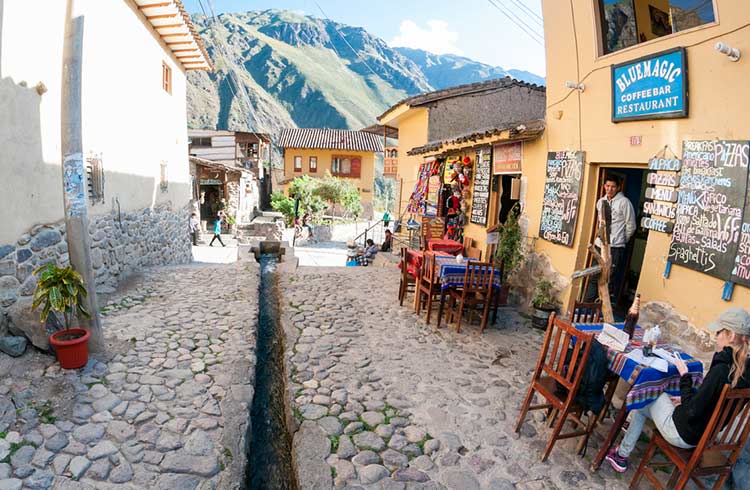
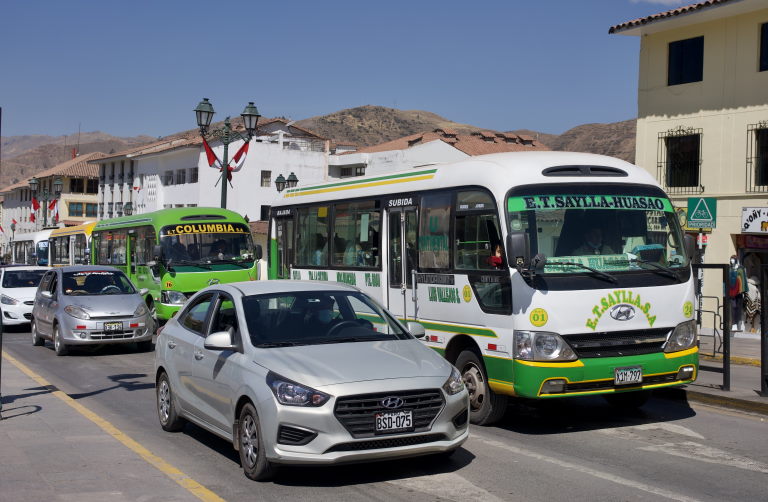
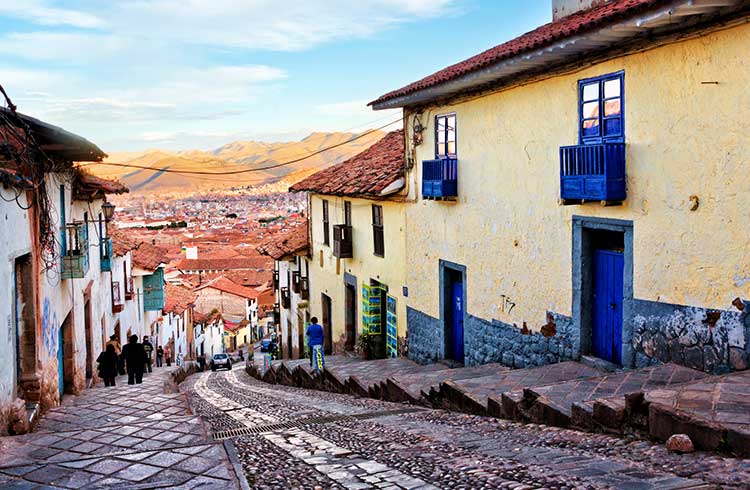
No Comments